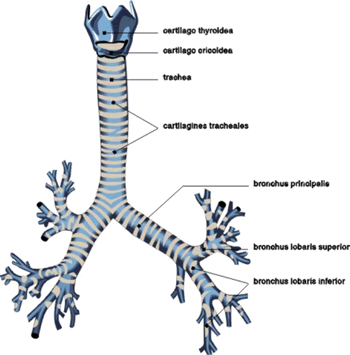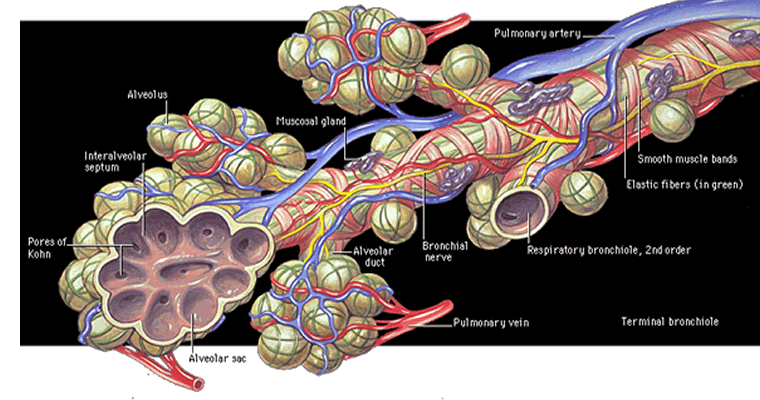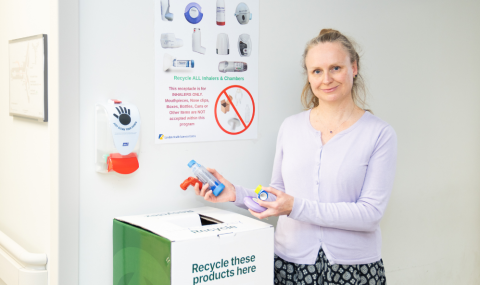|
PULMONARY The word pulmonary is used to describe the lung. Respiratory refers to the breathing system. Pulmonay Function Tests are tests to evaluate lung function. A Respirologist is a physician that specializes in disorders of the lung. Blood gases are a common test to evaluate breathing. Air first enters the air passage through the mouth or nose. Air continues down the windpipe (called the trachea), branching into one bronchus (singular tense) on the right side and a second bronchus on the left. These two bronchi (pleural tense) become smaller passages called bronchioles. The term bronchiolar refers to the bronchioles. Bronchioles become progressively smaller until they terminate into a cluster of grape like air sacs called alveoli. Small blood vessels called pulmonary capillaries surround the alveoli. |
ABOVE: Lungs. |
|
ABOVE: Air Passages. |
|
|
ABOVE: Normal alveolar-capillary structures. |
|
|
|
|
Last Reviewed: October 23, 2014
|
|
Our masking guidelines have been updated. Visit the Patient and Visitor Masking Guidelines page for more information.





